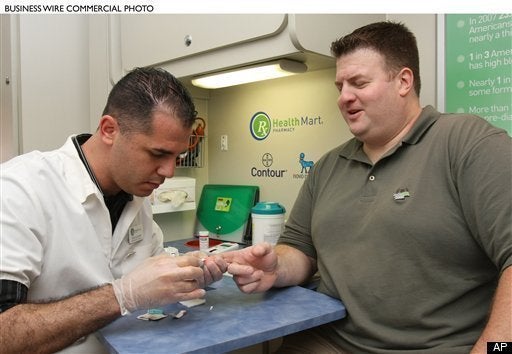
When it comes to healthcare, bigger isn't necessarily better -- not even in Texas. In a recent New Yorker article, Dr. Atul Gawande examines the healthcare system of McAllen, TX, also known as one of the most expensive places in American healthcare. Despite the latest and greatest technologies and facilities, McAllen's five largest hospitals still rank below average on 23 of Medicare's 25 metrics for quality and care.
Gawande's article reveals the fatal flaw of our failed healthcare system: cost. The cost of healthcare is a big problem -- but not a new one. Since my graduation from medical school 40 years ago, healthcare cost has been a big problem that generated many big solutions.
But we have failed to solve the cost problem and now the stakes are higher. As President Obama recently noted, "The biggest threat to our nation's balance sheet is the skyrocketing cost of healthcare."
Einstein said: "You can't solve the problems of the present with the solutions that produced them." Could our solutions be part of the problem?
As a physician, healthcare executive, management scholar, author, advisor and, most importantly, a patient deeply immersed in the healthcare system, I have watched us repeat -- and fail with -- the same scenario, over and over again.
Start with a big problem. Then collect and analyze the data, consult the experts, and have lots of meetings to analyze, plan and predict. Finally, design and implement a big solution.
Data up, implement down, we literally think our way into a new way of acting. Here are some of the "solutions" I have experienced. Sound familiar?
•Managed care
•Payment reform (e.g., HMO's, capitation, higher deductibles and co-pays, Medical Savings Accounts, etc., now it's single-payer or something else)
•Computers and technology
•More regulation and better compliance
•Manage hospitals, doctors and nurses more efficiently
•Mergers, acquisitions, consolidation, cost cutting and downsizing
•Care rationing
These "solutions" are built into our current cost problem and more of the same simply won't solve it.
Building on the example of the Texan town, in his article Gawande identifies the direction a true transformation in healthcare might take. In comparison to McAllen, other localities (Grand Junction, CO) or organizations (like Mayo Clinic, Geisinger Clinic or Kaiser Permanente) provide high quality care at a much lower cost. He notes that when these high quality/low cost systems started, they all had a focus on, and were accountable to, the patient. He recommends we support leaders creating a new generation of organizations focused on the patient.
I couldn't agree more; that is exactly what to do. Now the question is how? The answer is well studied and not complicated, just different from what we are currently doing. We must act our way to a new of thinking. We can't design and implement transformations with big problem solutions. We must make the transformation with many small solutions.
Transformations follow a predictable course: a small number of leaders steadily adapt their organizations to deliver what the rest cannot. Harvard Professor Clayton Christensen's model of disruptive innovation tells that story over and over again. Toyota did not design and implement the Toyota Production System or the downfall of GM; they made it. Southwest Airlines did not design and implement the world's most profitable airline; they made it. And those are just two of hundreds of examples.
Healthcare transformation begins with those few organizations strategically and operationally "designed to adapt." They gain incredible competitive advantage in a rapidly changing world by following the methods that create great, transformational innovations. Here is how it works:
•Leadership sets a clear, simple, consistent, patient-focused course.
•Develop people as the number one resource.
•Rapidly problem solve as part of everyone's everyday work.
•Build trust, optimism, local knowledge and ingenuity to turbo charge success.
•Repeat and spread success opportunistically and relentlessly.
The process is called adaptive design. As reflected in my upcoming book, Designed to Adapt: Leading Healthcare in Challenging Times, this cycle has been tested and validated many times in healthcare. Consider this example of how "acting your way to a new way of thinking" improved patient satisfaction and quality, while decreasing costs:
A 45-bed medical surgical unit in a Midwest hospital focused on adaptive, real-time problem solving of patient needs for 13 months. The results: this unit had the greatest increase in patient satisfaction in a 17-hospital system. At the same time they increased staff productivity 14 percent, decreased length-of-stay by 8 percent, decreased staff turnover by 51 percent and saved $1.7 million.
The transformation of healthcare starts and ends with the patient. The answer is simple but not easy because of our top-down, big solution habits and expectations. We can't think our way to a new way of acting; we must act our way to a new way of thinking. That is the way we are going to get patients exactly what they need at continually lower cost, and in so doing -- start to fix healthcare.
Dr. John Kenagy is a former Visiting Scholar at Harvard Business School and the author of the forthcoming book Designed to Adapt: Leading Healthcare in Challenging Times (Second River Healthcare Press, 2009).
